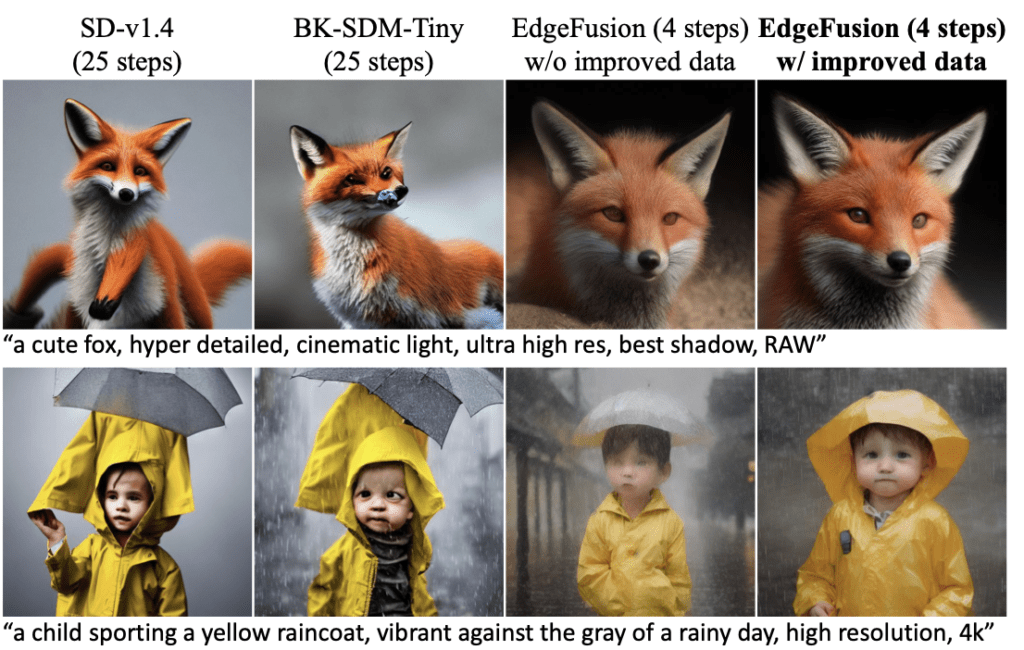Streamlining AI with EdgeFusion to Enhance Text-to-Image Synthesis on Resource-Constrained Devices
- Model Optimization: EdgeFusion optimizes Stable Diffusion models for efficient execution on edge devices by implementing advanced distillation processes and leveraging high-quality synthetic data.
- Significant Performance Gains: The new approach dramatically reduces the computational load, enabling the generation of photorealistic, text-aligned images in under one second with minimal latency.
- Focus on Deployment Efficiency: Through quantization and detailed profiling, EdgeFusion ensures that even devices with limited resources can swiftly produce high-quality images from text prompts.

Samsung Electronics has made a significant breakthrough with the introduction of EdgeFusion, a pioneering technology designed to facilitate on-device text-to-image generation. This development comes as a response to the challenges posed by the computational intensity required by traditional Stable Diffusion (SD) models, which have historically limited their deployment on resource-constrained devices such as Neural Processing Units (NPUs).
Technical Innovations and Methodology
EdgeFusion diverges from traditional approaches by starting with a compact variant of the Stable Diffusion model, known as BK-SDM. Recognizing the limitations of applying standard techniques like the Latent Consistency Model (LCM) with commonly used datasets, Samsung’s research team has developed two strategic methods to enhance performance: firstly, by sourcing high-quality image-text pairs from top generative models, and secondly, through crafting a customized distillation process specifically tailored for LCM. These innovations facilitate the rapid generation of images that are not only photorealistic but also closely aligned with textual prompts.

Enhanced Computational Efficiency
The cornerstone of EdgeFusion’s approach is its focus on optimizing SD models for performance on devices with significant constraints. By employing techniques such as pruning, knowledge distillation, and quantization, EdgeFusion minimizes the memory footprint and computational demands of text-to-image synthesis. This optimization allows for the deployment of these advanced models on Samsung’s Exynos NPUs, which are commonly integrated into a wide range of consumer electronics.
Real-World Applications and Future Prospects
EdgeFusion opens up a plethora of potential applications, from enhancing creative arts with rapid, on-the-fly image generation to integrating sophisticated visual aids into user interfaces across Samsung’s product lineup. Looking ahead, the continued refinement of EdgeFusion could lead to more interactive and visually enriched experiences on mobile devices, wearables, and other IoT platforms.
Samsung Electronics’ EdgeFusion represents a significant advancement in the field of AI-driven text-to-image generation, specifically tailored for edge devices. By addressing the core challenges associated with deploying large, complex models in resource-limited environments, Samsung not only advances its own technological offerings but also sets a new benchmark for the industry in on-device AI capabilities. This technology not only enhances the user experience by reducing wait times for generated content but also broadens the accessibility of AI-enhanced features to a wider range of devices and applications.
